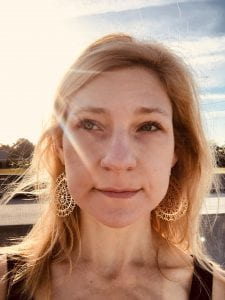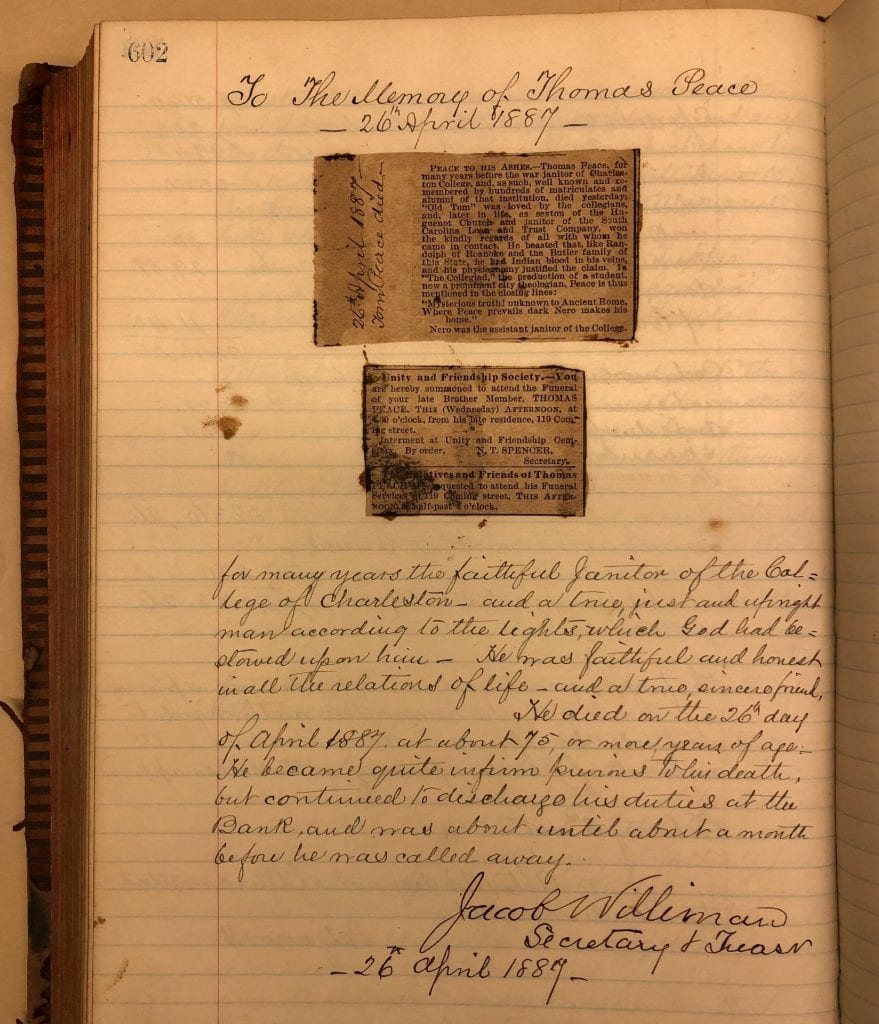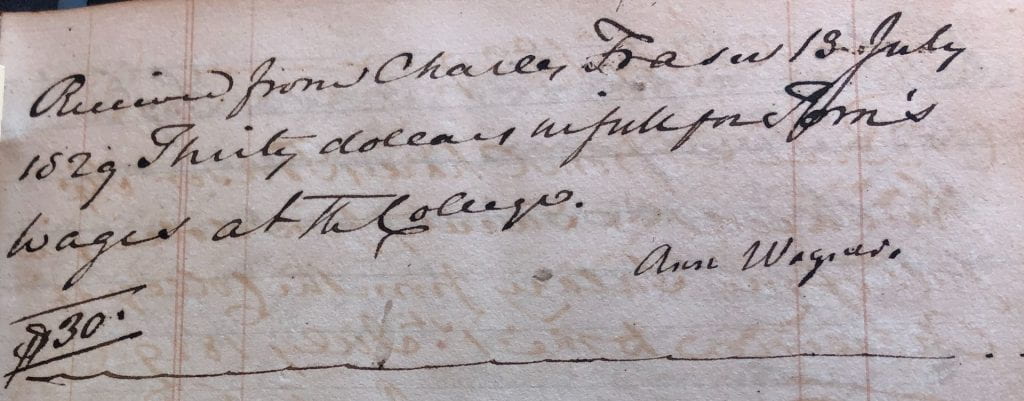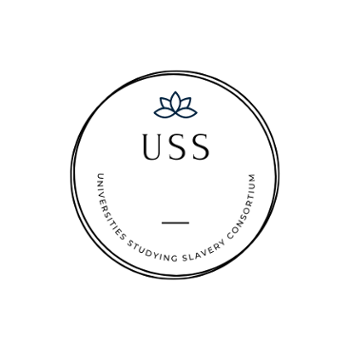Archives For November 30, 1999
The Anson Street African Burial Ground (ASABG) Project Team will be hosting two days of events titled “Truth Rising: Honoring African Presence in Charleston.” These activities reflect the group’s work studying, protecting, and honoring Gullah Geechee burial grounds, including the unmarked graves found during construction on the Gaillard Center in 2013.
On Tuesday, May 3rd from 6:30pm to 8:30pm the group will be at the Cannon Street Arts Center at 134 Cannon Street, where attendees can learn more about the ongoing research into the thirty-six individuals found at the Gaillard Center site. Between 5pm and 6pm free DNA testing will also be available.
Wednesday, May 4th is the third anniversary of the Gaillard Center site reburial ceremony, and the ASABG will be hosting a celebration with libations, music, and speeches. The event will be at 2 George Street from 6:30pm to 7:30pm, and attendees will have another free DNA testing opportunity from 7pm to 8pm.
The full itinerary is below. Participants can learn more about these events and RSVP at ASABGProject.com.

 The Center for the Study of Slavery in Charleston will be hosting two upcoming events with the Carolina Lowcountry and Atlantic World (CLAW) program featuring Dr. James O’Neil Spady, Associate Professor of American History at Soka University in Aliso Viejo, California. Dr. Spady is the author of Education and the Racial Dynamics of Settler Colonialism in Early America: Georgia and South Carolina, ca. 1700 – ca. 1820, and editor and contributor of the book Fugitive Movements: Commemorating the Denmark Vesey Affair and Black Radical Antislavery in the Atlantic World.
The Center for the Study of Slavery in Charleston will be hosting two upcoming events with the Carolina Lowcountry and Atlantic World (CLAW) program featuring Dr. James O’Neil Spady, Associate Professor of American History at Soka University in Aliso Viejo, California. Dr. Spady is the author of Education and the Racial Dynamics of Settler Colonialism in Early America: Georgia and South Carolina, ca. 1700 – ca. 1820, and editor and contributor of the book Fugitive Movements: Commemorating the Denmark Vesey Affair and Black Radical Antislavery in the Atlantic World.
On April 18th at 6pm EST Dr. Spady will be giving CSSC’s annual lecture entitled “A Movement, not a Conspiracy: A New Narrative of the 1822 Denmark Vesey ‘Affair.'” Attendees can join online via Zoom or in person in Room 101 at the Rita Liddy Hollings Science Center at 58 Coming Street, Charleston. Register for tickets on Eventbrite.
Dr. Spady will also be leading the seminar “Mapping a Movement: Archival and Digital Methods for Representing the Social and Spatial Connections of the 1822 Denmark Vesey ‘Affair'” on April 19th at 3:30pm EST in Room 360 of Addlestone Library. Addlestone Library currently requires a College of Charleston faculty or student ID for entrance.

Polly Sheppard and Margaret Seidler on the Edmund Pettus Bridge along with Margaret’s husband, Bob, Summer 2021.
On Wednesday, March 30, the Center for the Study of Slavery in Charleston will be hosting a talk as part of the Critical Conversations Featured Series. Participants are Polly Sheppard, survivor of the 2015 Mother Emanuel AME shooting, and Margaret Seidler, a descendant of three generations of Charleston slave traders. The event will be moderated by Marjory Wentworth, former poet laureate of South Carolina, and Dr. Bernard Powers of the CSSC.
Sheppard is a Licensed Practical Nurse from Florence, SC, who has spoken about her experiences at Mother Emanuel before Barack Obama and the Democratic National Convention. She serves as a member of the Board to construct the Mother Emanuel Memorial at the tragedy’s site, and founded the Polly Sheppard Foundation scholarship to provide financial support to Trident Technical College nursing students pursuing careers in prison health.
Seidler is a retired leadership and organization development consultant, and has authored several books on business and human resources. Since the Mother Emanuel AME shooting she has advocated for local voices in community and racial healing initiatives. With former Charleston Police Chief Greg Mullen she started the Charleston Illumination Project, a year-long project to strengthen respect and relationships between police and communities.
The event will be at 6pm EST, in person at the Rita Liddy Hollings Science Center Auditorium (58 Coming St, Charleston, SC, 29401) and over Zoom. Participants must register online.

Dr. Mari Crabtree, author of “My Soul is a Witness”: The Traumatic Afterlife of Lynching, 1940−1970.
As part of the Black Lives World Affairs Signature Series, hosted by the College of Charleston’s School of Languages, Cultures, and World Affairs, Dr. Mari Crabtree will be holding a book talk entitled “Lynching’s Afterlives: Memory, Trauma, and the Sensibility of the Blues.” The talk will be over Zoom on Thursday, March 3 at 6pm.
Dr. Crabtree teaches at the College of Charleston in the department of African American studies. Her book “My Soul is a Witness”: The Traumatic Afterlife of Lynching, 1940−1970 is set to be published by Yale University Press this year:
My Soul is a Witness traces the long afterlife of lynching in the South through the traumatic memories it left in its wake. By interweaving the stories of people and places haunted by lynching, Mari N. Crabtree unearths how Black southerners lived through and beyond these horrors, offering a theory of Black collective trauma and memory rooted in the ironic spirit of the blues sensibility—a spirit of misdirection and cunning that blends joy and pain.
Jim Crow and its threat of violent, if not deadly, reprisals tried to impose silence upon Black southerners, but they did find their voices. They often shielded their loved ones from the most painful memories of local lynchings with strategic silences but also told lynching stories about vengeful ghosts or a wrathful God or the deathbed confessions of a lyncher tormented by his past. They protested lynching and its legacies through art and activism, and they mourned those lost to a mob’s fury. In these and other ways, they infused a blues element into their lynching narratives as they confronted traumatic memories and kept the blues at bay, even if just for a spell. Telling their stories troubles the simplistic binary of resistance or suffering that has tended to dominate narratives of Black life and reminds us that, amid the utter devastation of lynching, were glimmers of hope and an affirmation of life.
View Dr. Crabtree’s faculty profile for more information on her work.
To register for this event: https://cofc.zoom.us/webinar/register/WN_CI3GDDlUSH6_9oLPjccMyw

Charleston Courier, January 27, 1808
This Saturday, February 26, 2022, the Town of Mount Pleasant will be hosting a presentation on the International African American Museum (IAAM) as part of its Black History Month events series. The museum is scheduled to open later this year and will house memorial gardens, exhibits and collections, event spaces, and a genealogy research center. It stands at Gadsden’s Wharf, where many enslaved Africans first stepped foot on American soil.
The event will be held at 3pm in the Town Hall Council Chambers, 100 Ann Edwards Lane, Mount Pleasant, SC, and will also be broadcast live on YouTube.
Speakers will include Dr. Tonya M. Matthews, CEO of the IAAM, and Dr. Bernard E. Powers, Jr., member of the IAAM Board of Directors and its former interim president. The presentation will also include a performance by Ms. Ann Caldwell, a singer, songwriter, producer, and storyteller who has been a part of the Charleston music scene for twenty-five years.
For more information on the Mount Pleasant Historical Commission’s Black History Month events, please visit their website.
Please also see the IAAM site for more about their mission and events, including updates on its opening.

This post, written by Mary Jo Fairchild, is one of a series that documents work studying slavery by faculty members of the CSSC.
As an archivist and historian, I gravitate towards projects that leverage research and interrogation of historic records to support and uplift social justice-oriented community work. Working with the research committee of the Center for the Study of Slavery in Charleston (CSSC) gives me the opportunity to flex and engage both of these seemingly disparate devotions.
I remember the first time I began researching the College of Charleston’s ties to slavery and oppression. It was 2010 or so and I had recently completed graduate course work in American History with an emphasis on African American History at the College of Charleston. Not long after, I was appointed the Director of Archives and Research for the oldest and largest private archive in the state, the South Carolina Historical Society. My daily duties revolved around operating a bustling reading room, where students, community members, and scholars would visit and subsequently spend hours examining historic letters, diaries, newspapers, ledgers, images, maps, pamphlets and more. Very quickly I became adept at connecting a researcher with a document or record stored in one of the crowded vaults that might help answer the question that brought them to the archives.
Of course, I had questions of my own and on one quiet afternoon, I fired up the old microfilm machine in the back of the library to examine capitation tax records for clues about the identity of a person named Tom Peace, whose name appears in the minutes of the Board of Trustees in several instances throughout the 19th century. At his death at “about 75 or more years” of age in 1887, the Board of Trustees published a tribute to “Old Tom, the janitor” which included the fact that Tom “boasted that he had Indian blood in his veins and his physiognomy justified the claim.” 1

Let me pause here for a moment. Capitation tax records deserve what Shereen Marisol Maraji and Gene Demby, hosts of NPR’s Code Switch podcast (consider this a HUGE plug for one of my favorite podcasts!), call a brief explanatory comma. Prior to emancipation, free persons of color in the city of Charleston were required to pay an annual “capitation tax” or head tax. Basically, free Black people (also referred to as free persons of color in the antebellum South) had to pay the city for their “free” status. Since the white ruling class could not benefit directly from the unpaid labor of free persons of color, they enacted an ordinance that taxed them to make up for the profits they would generate if enslaved, the default status of Black people in antebellum the South. The records include the names, ages, occupations, real estate holdings, and more for free Black people living in Charleston from 1811 to 1860. It is essential to acknowledge that the original purpose for keeping records for capitation taxes was rooted in the subjugation of Black lives. Nearly 300 years later, the words on the page provide the inheritors of the records with a valuable source for learning more about individuals who occupied what CSSC’s own Executive Director Bernard Powers calls an “anomalous” status, completely “dictated by the region’s commitment to slavery” in his monograph Black Charlestonians, A Social History, 1822-1855. 2
Examination of capitation tax records yielded no direct information about Tom Peace, although starting in 1845 there is a woman named Isabella Peace listed. By 1850 and 1852, the records indicate Isabella Peace was living on “St. Philip’s street near George” and at the “corner of College and George”, respectively. Both of these locations are at the heart of the college campus. I began to speculate. Was it possible that Isabella was some kin or relation to Tom Peace?

A decade after I first found Isabella Peace in the capitation tax records, I am now an archivist in Special Collections at the College of Charleston and work regularly with the College’s archives; so, not long ago I picked up the research thread I still held in the back of my mind for Tom Peace and decided to look a bit deeper. I followed financial transactions and discovered that the Treasurer of the College, Charles Fraser, was making regular monthly payments for “Tom’s wages” to a woman named Anne Wagner starting in 1829.

Could this be the Tom Peace to whom the Board of Trustees paid tribute in 1887? It is certainly possible since Tom Peace was said to be 75 years of age at his death which would make him 17 years old in 1829. Furthermore, according to the Charleston City Directory published in 1830, Anne Wagner resided at 52 St. Philip Street – again, at the heart of campus in the antebellum era. Did Ann Wagner hire Tom’s labor to her neighbors at the College of Charleston? Could Isabella Peace listed in the capitation tax records have been Tom Peace’s daughter? The silences and omissions of the historical record leave us with more questions than answers. Had the labors of men and women like Tom and Isabella Peace been properly acknowledged, compensated, and valued, we would have more than a set of financial transactions to mark their lives. It is time to mark their names and publicly acknowledge their roles and contributions.
As I said at the top, I am frequently drawn to archival research projects but I learned how to wield historical research methods for racial justice from the many scholars of race and slavery I’ve worked with in the archives. Edda Fields-Black taught me about multi-generational Black kinship networks in the Sea Islands and Toni Carrier helped me understand how to help people trace their family history when their ancestors were enslaved. Darlene Clarke Hine taught me how to look for the contributions of Black women in the historic record when the white record-makers did everything they could to erase them and Andrea Williams brought her graduate students to the archives to experience how people of African descent, enslaved and free, are present in the archives if one looks close enough and reads the silences. Gerald Horne demonstrated how the rare published travel diaries in the archives offer important perspectives absent in business ledgers and diaries kept by enslavers and Rita Reynolds took me along her journey to tell the stories of free Black women living and working in South Carolina during the antebellum era. I poured over the pages of eighteenth century ledgers searching for the name of Priscilla, a young girl kidnapped from her home in West Africa and enslaved by members of the Ball family, scratched on a page in iron gall ink to help Henry Louis Gates, Jr. and Edward Ball tell her story to a national audience.
I am humbled to continue to use the skills I’ve learned over the years to participate and contribute to the mission and vision of the Center for the Study of Slavery in Charleston. In solidarity with other entities and programs on campus including the Avery Research Center for African American History and Culture and the Carolina Lowcountry and Atlantic World program, the CSSC provides a platform and support for scholars, faculty, students, the larger community to collaboratively mine evidence from the past, both material, written, and what exists “in between the lines”, to demonstate how the College of Charleston would not exist as we know it without the contributions of people who were historically marginalized.
Sources
College of Charleston Archives, Historical Series. Special Collections and Archives, College of Charleston Libraries.
Powers, Bernard. Black Charlestonians: A Social History, 1822-1855. University of Arkansas Press, 1994.
Farrell, Jessica. “History, Memory, and Slavery at the College of Charleston, 1785 – 1810.” Chrestomathy: Annual Review of Undergraduate Research Vol 7, 2008: pp. 52 – 71: https://chrestomathy.cofc.edu/documents/vol7/farrell.pdf
Rogers, Kaylee. “Overworked and Underpaid: ‘Black’ Work at the College of Charleston”. Chrestomathy: Annual Review of Undergraduate Research, Vol 7, 2008: pp. 227-247.
“South Carolina, Charleston, Free Negro Capitation Books, 1811-1860,” https://www.familysearch.org/search/collection/3405101.
Charleston City Directories: https://www.ccpl.org/city-directories
Footnotes




 King’s and Dalhouse University will be hosting a pre-conference panel at 3pm, November 1, 2021 on the theme of Slavery and Reparations: African Nova Scotia, Canada and Beyond. The panel discussion will feature Dr. Andrea Douglas, Director of the Jefferson School African America Heritage Centre in Charlottesville, Virginia; Cikiah Thomas, Chairperson of the International Working Committee of the Global African Congress; and Delvina Bernard, a PhD candidate at Saint Mary’s University in Halifax, Nova Scotia studying reparations and reparatory justice. The event is in anticipation of the 2023 Universities Studying Slavery Conference that will be held in Halifax, Nova Scotia.
King’s and Dalhouse University will be hosting a pre-conference panel at 3pm, November 1, 2021 on the theme of Slavery and Reparations: African Nova Scotia, Canada and Beyond. The panel discussion will feature Dr. Andrea Douglas, Director of the Jefferson School African America Heritage Centre in Charlottesville, Virginia; Cikiah Thomas, Chairperson of the International Working Committee of the Global African Congress; and Delvina Bernard, a PhD candidate at Saint Mary’s University in Halifax, Nova Scotia studying reparations and reparatory justice. The event is in anticipation of the 2023 Universities Studying Slavery Conference that will be held in Halifax, Nova Scotia.